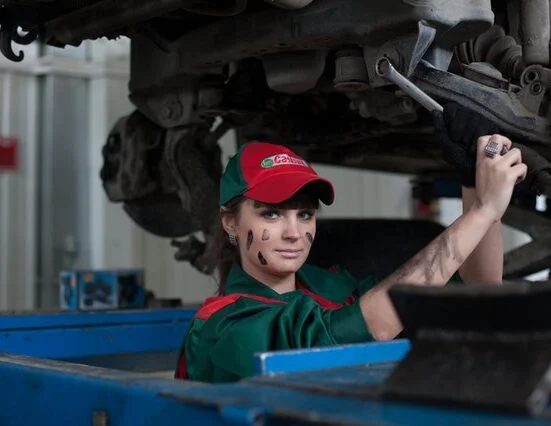There are various theories that believe that this game is originated from the Vedic period. As per Tukaram’s Abhang, God Krishna used to play this game. Some say that it originated in Tamil Nadu. It is believed that this game was invented to evolve defending responses by an individual against a group attack to a personal attack. However, India was the first country to help Kabaddi popularize as a competitive sport, the first competition in the 1920s, but it received international exposure in 1936, in the Berlin Olympics. The first-ever women’s Kabaddi event took place in India in 1995. Kabaddi is a team sport that is played between two teams consisting of seven players in each team. It is popular in the Indian subcontinent and Asian countries and, several names know it in a different parts of Indian subcontinents, such as ha-du-du in Bangladesh, bhavatik in Maldives, cheduguddu in Andhra Pradesh, hu-tu-tu in Western India, hu-do-do in Eastern India, Chadakudu in South India, karpadi in Nepal and saduguddu in Tamil Nadu. This game produces excitement and thrill and is therefore called the game of masses.
This game needs power, speed, stamina with a healthy body, alertness, breath-holding capacity, muscular coordination, grabbing, kicking, and crucial presence of mind under risky situations. There have been so many moderate changes in the Kabaddi game in the past 50 years as it was first considered the game of brawn, but it is not now. With the establishment of Kabaddi Mat, new techniques, and some changes in the rule of the game, it has become more thrilling and superior for players of all abilities and for those who have made their way from other sports. Kabaddi is the only sport in which both women and men have won all the cups since its very conception.
Table of Contents
Types of Kabaddi
This game is reasonably played in many forms. However, there are four variants that have been recognized by AAKF (Asian amateur Kabaddi federation).
1. Sanjeevani Kabaddi – This is a 40-minute sweat-out game of 7 players, with one player revived against one rival player. The team that puts out all the players on the opponent’s side scores four extra points.
2. Gaminee Kabaddi – Another game of 7 players, but the only difference is that the out players remain so until all his team members are out as well. The team that is successful in removing all the players secures the point, and the game continuous until five or seven such points are secured, and there is no fixed time duration in this.
3. Punjabi Kabaddi – it is also known as kauddi in Punjab and has various forms, like lambi, saunchi kabaddi, goongi Kabaddi, and 19 other traditional forms. This form is followed in many international tournaments like the Kabaddi world cup and the World Kabaddi League. It is played on a circular pitch of diameters 22m.
4. Amar Kabaddi – This is similar to sanjeevani kabaddi, but with a change in the rule, as if any player is out, he does not go out of the court but stays inside, and one point is awarded to the team that touched him. This game is also played on time basis, i.e., the time is fixed. In this form of Kabaddi, each team consists of 5-6 stoppers and 4 to 5 raiders; at one time, only four stoppers are allowed to play on the field. This form of Kabaddi is played in Punjab, Canada, England, New Zealand, the USA, Pakistan, and Australia.
Kabaddi Mat Specification
International Kabaddi, it is an indoor sport, is fundamentally played on the synthetic mat. The size of the Kabaddi court Mat is 13 X 10 m for men and 11 X 8 m for women and juniors. Kabaddi Mat is divided into parts by the Mid Line, in which both teams defend themselves. The Side lobby’s Kabaddi mat size is 1m wide on both sides, the baulk line is 3.75 m from the Mid line, the bonus line is 4.75 m from the Mid Line, and the distance between the baulk line and the bonus line is 1m.
Material composition – While looking for a good quality Kabaddi mats, you should ensure that it should have a composition of high-quality materials. For instance JSR- Japanese synthetic rubber, as they are made up of 100 percent fresh materials, they are lightweight and comfortable, easy to clean, and water-resistant. The surface is non-slippery and firm enough to stand, and soft enough to protect your body.
| Thickness | 20mm, 25mm, 30mm, 35mm, 40mm |
| Mat Type | Interlocking Mats |
| Density | 80 kgs per cubic meter to 150 kgs per cubic meter |
| Material | EVA Foam + JSR (Japanese Synthetic Rubber) |
| Size | 1meter*1meter |
| Mats Required | Men: 130 Mats, Women and Juniors: 88 Mats |
| Color | Red, Blue, Grey, Yellow, Black |
The Kabaddi Mat price in India may vary in price according to their thickness, material, and colors.
Facts about Kabaddi Mat
Good quality Kabaddi mats are important for a safe and exciting Kabaddi match. It can be used on either side. If one surface gets dirty, you can play the game on other side of the Kabaddi mat and if you want to cover the large area, you can look for interlocking mats as well. The best Kabaddi mats provide security and authenticity. It prevents you from injuries and makes the game more suitable and comfortable for the players. It improves the aesthetics and looks of the Kabaddi court and offers many other benefits. There are various Kabaddi Mats available according to their quality, durability, and long-lasting features.
Kabaddi Federation around the world
1. The Asian Kabaddi Federation (AKF)
2. The Kabaddi Federation of India (KFI)
3. The Asian Amateur Kabaddi Federation (AAKF)
4. The England Kabaddi Federation UK (EKF)
5. Pakistan Kabaddi Federation (PKF)
6. The Bangladesh Amateur Kabaddi Federation (BAKF)
7. The Iran’s Amateur Kabaddi Federation (IAKF)
8. Amateur Kabaddi Federation of India (AKFI)
International Kabaddi Competitions
Kabaddi is an all-around game that is played under variations and in different setups. Accordingly, international competitions enveloping the sport have also been revolving out in numerous games of play.
Kabaddi World Cup – is an international competition contested by both the men’s and women’s teams.
Kabaddi at Asian Games – it had a strong presence and has witnessed tremendous frenzy after that.
Pro Kabaddi League – Established in 2014, with the participating teams been owned by celebrities and like this Kabaddi league competition has been extremely popular among the Indians.
Super Kabaddi League – it is the Pakistan parallel of the Indian Pro Kabaddi League.
Women’s Kabaddi Challenge – It is a pro kabaddi league for women in India.
Neo Kabaddi League – it is the second most professional Kabaddi tournament in India.





